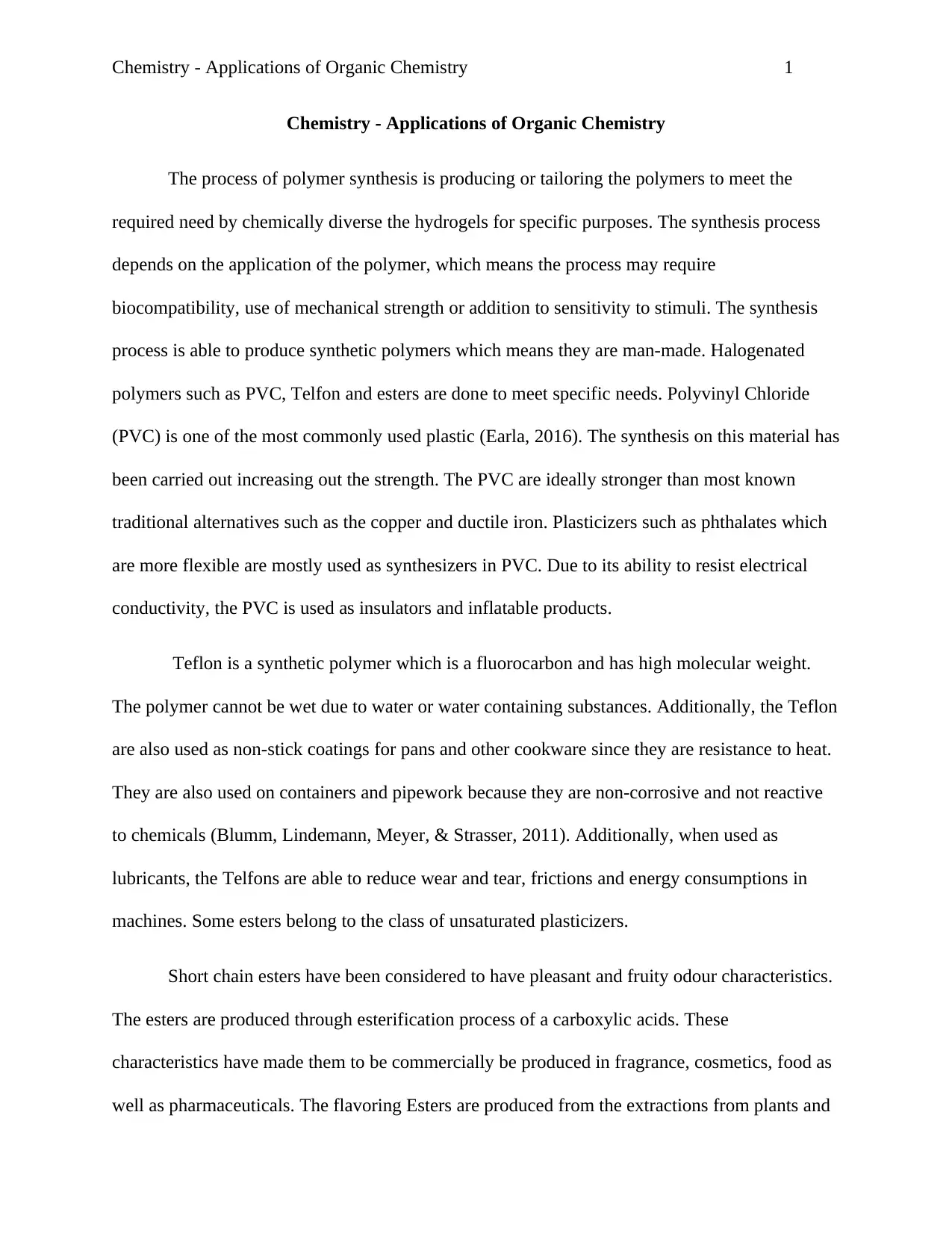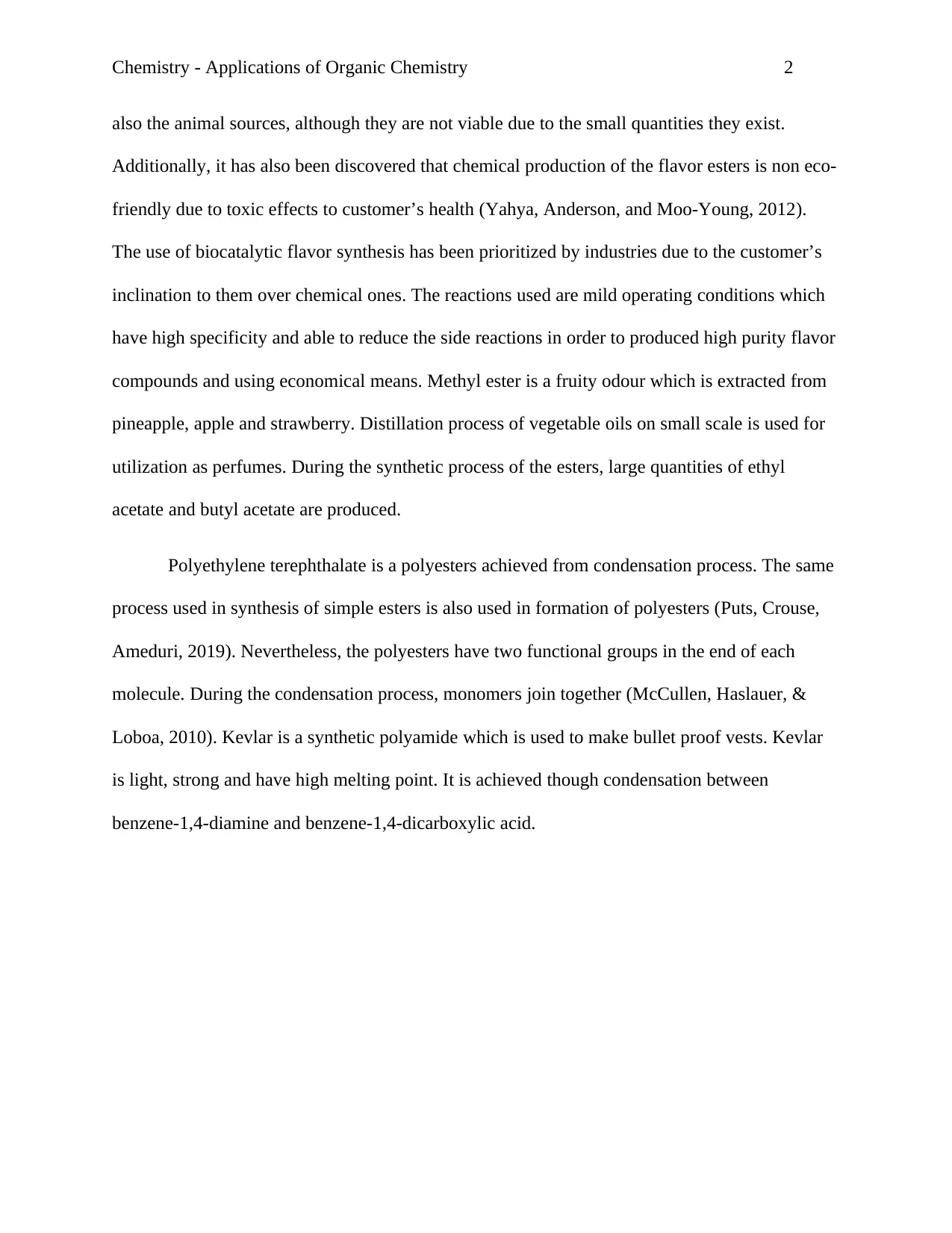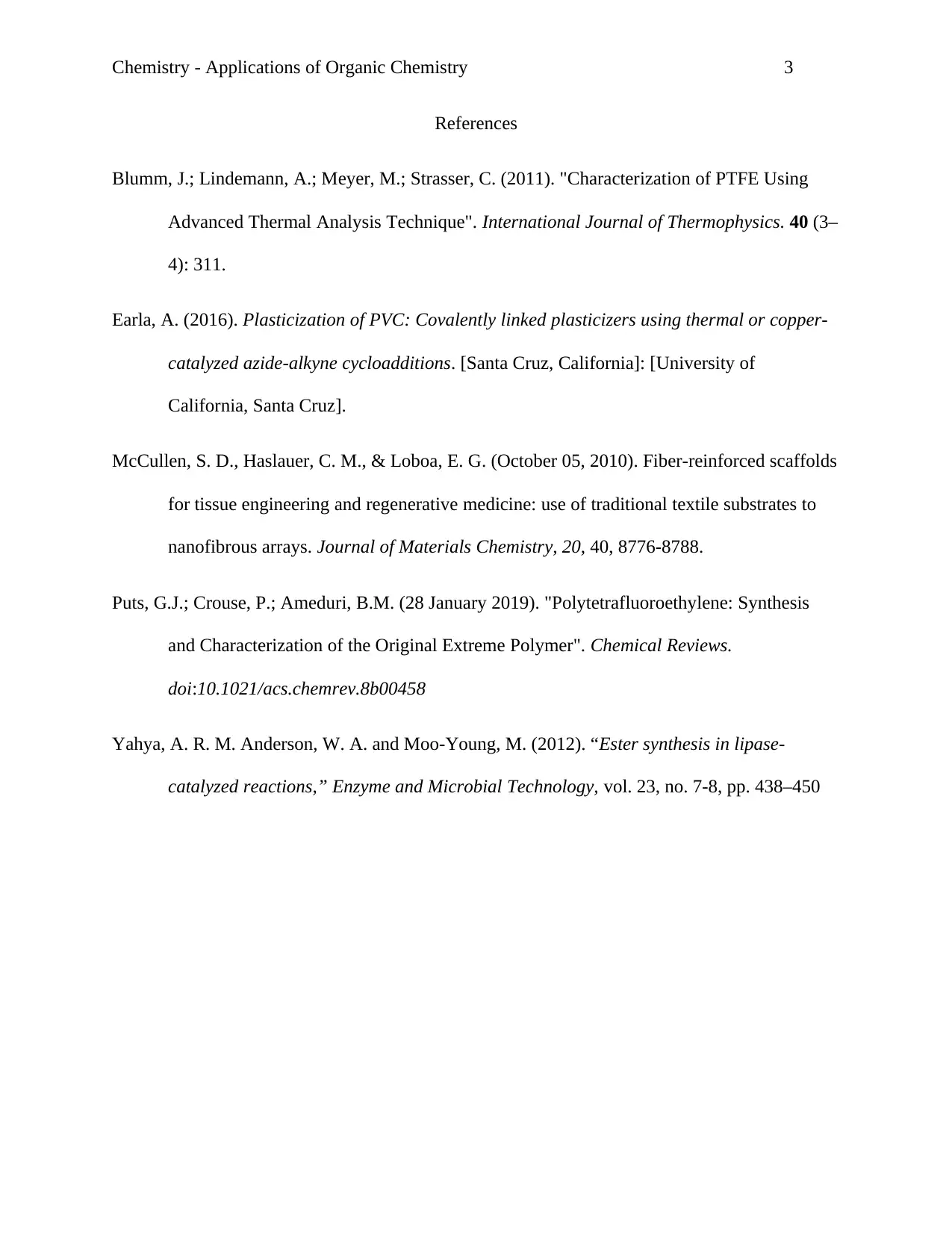Chemistry Assignment: Applications of Organic Chemistry in Polymers
VerifiedAdded on 2022/12/27
|3
|833
|56
Report
AI Summary
This report provides an overview of the applications of organic chemistry in polymer synthesis. It discusses the synthesis and uses of various polymers, including Polyvinyl Chloride (PVC), Teflon, and esters. The report highlights the importance of these polymers in different industries, such as construction, electrical insulation, and food flavoring. It also explores the synthesis of polyethylene terephthalate and Kevlar, emphasizing their unique properties and applications. The report touches upon the environmental considerations of chemical production of flavor esters and the shift towards biocatalytic flavor synthesis. The document offers insights into the diverse applications of organic chemistry in creating materials with specific properties and functionalities. The report also includes relevant references to support the information presented.
1 out of 3




![[object Object]](/_next/static/media/star-bottom.7253800d.svg)